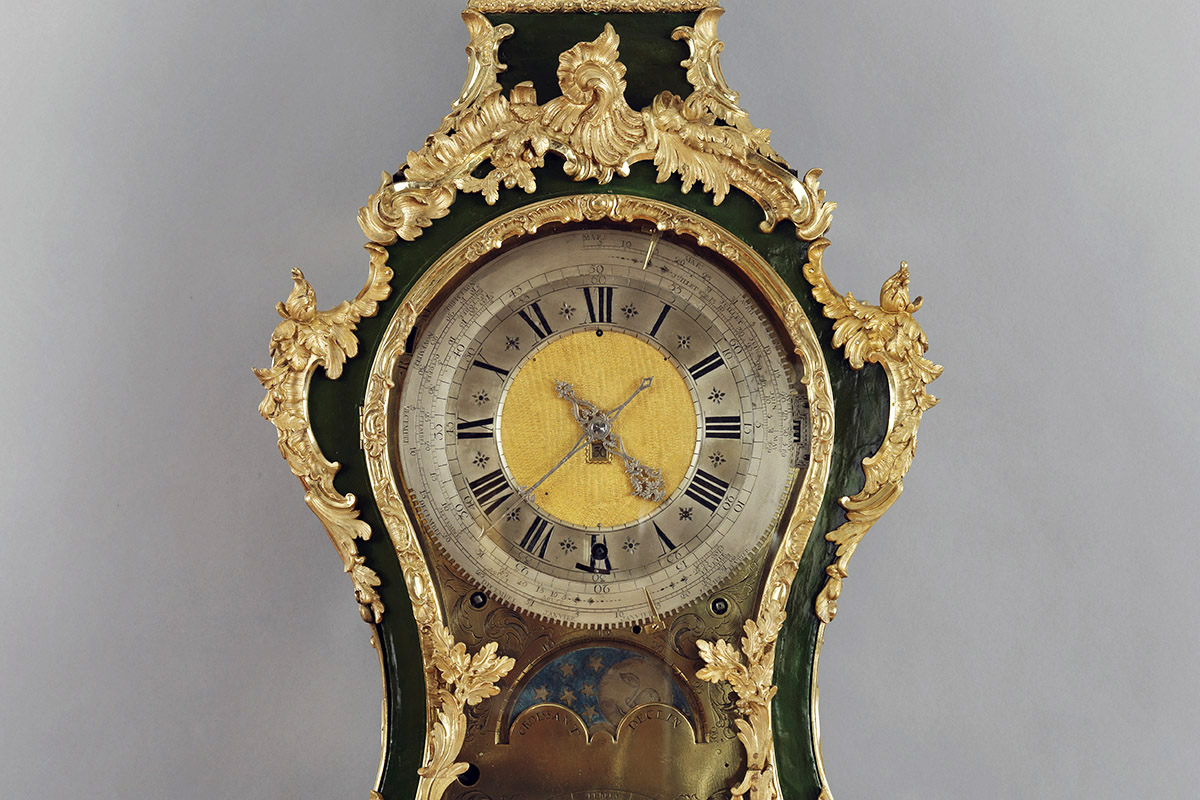This post is also available in: Italian
Some people are born with a talent that makes a lifetime seem too short. Often brilliant and multifaceted, they appear to excel in every field with equal ease. It’s hard to believe that they could have achieved everything the records say they did.
This was certainly true of Pierre-Augustin Caron de Beaumarchais, an 18th century French genius. Born in Paris on 24 January 1732, he was the son of André-Charles Caron, a renowned watchmaker. As was often the case, artistic or craft activities were handed down from father to son. Pierre-Augustin Caron displayed a keen intellect and a natural aptitude for watchmaking. Indeed, he invented a new type of escapement known as the double virgule at the age of twenty.
An unpleasant experience
His father, Pierre, was a renowned watchmaker and inventor. He is best known for inventing the skeletonised movement of pocket watches. Nobles, academics and other master watchmakers of the time visited his Parisian workshop. The young Pierre-Augustin showed one of them, Jean-André Lepaute (1720/1789), his drawings and explained the advantages of his creation, the double virgule escapement, with all the enthusiasm of a young inventor. Lepaute was older than Pierre-Augustin and was the King’s official watchmaker. He was also one of the greatest figures in French watchmaking history and the author of some of the most renowned treatises on the subject from that period.
Unfortunately, genius does not necessarily imply intellectual honesty. Lepaute stole the idea of the double virgule escapement and presented it to the King as his own invention. Pierre-Augustin was young but determined. He submitted a memorandum to the Académie des Sciences defending his case so effectively that he was awarded credit for the invention. Most importantly, he replaced the treacherous Lepaute as the new Horloger du Roi.
A quick rise
Pierre-Augustin Caron was a great watchmaker, a skilled merchant, a talented harpist, and a charming conversationalist. His star shone so brightly in Paris that, in 1756, he married a wealthy widow. She brought him a noble title associated with a small family estate, as well as a sizeable dowry. Caron became known to everyone as Caron de Beaumarchais.
He produced high-quality watches, his business prospered, and his success and talent for public relations opened the doors to new opportunities. An enterprising merchant, he used his travels to spy on behalf of Louis XV and Louis XVI. He began to attend financial circles, discovering a whole new world. He then became interested in politics and took part in intelligence operations during the American War of Independence, all the while surrounded by clock dials and escapements.
Caron de Beaumarchais: engineer, politician and man of letters
He was widowed and remarried, only to be widowed again soon afterwards. Despite his eventful life, he found time to write. Rather than writing a diary or a text on watchmaking, he devoted himself to theatre. His first plays were good dramas, but not excellent. It was his comedies that secured his lasting fame.
Beaumarchais seemed to move effortlessly from the pen of a man of letters to the watchmaker’s lathe, consistently producing masterpieces. Perhaps he also traded in arms and spied — incidentally — for the good of his country.
You may wonder why Caron de Beaumarchais was such a renowned man of letters. Among his famous theatrical works, the trilogy The Marriage of Figaro stands out above all others. His tales of a Spanish barber’s adventures inspired Mozart’s opera of the same name, through Da Ponte’s libretto, as well as Gioacchino Rossini’s The Barber of Seville, based on Sterbini’s libretto.
And what about the watches?
The shop continued to thrive. In fact, it did so well that Pierre-Augustin was able to purchase the copyright to all of Voltaire‘s works following the philosopher’s recent death. He became a publisher and planned to release the French philosopher’s complete works (he was also interested in watches and entrepreneurship) in a high-quality edition.
Recalling his own background as a watchmaker, Pierre-Augustin took on a promising young apprentice: Jean-Antoine Lépine. With his famous calibre and other inventions, Lépine would become another great figure in French watchmaking. Caron de Beaumarchais found a worthy successor in Lépine. Wanting Lépine as a partner, he gave him one of his daughters in marriage, preferring him to his own sons.
A bitter fate
However, from 1770 onwards, Beaumarchais’s luck seemed to desert him. He was involved in the early stages of the American War of Independence, prior to France’s official involvement, financing the shipment of weapons to the insurgents himself. Never reimbursed for these expenses, and his considerable fortune was reduced to almost nothing. He experienced the humiliation of imprisonment and became embroiled in legal disputes.
His theatrical successes in Paris and London were of little use to him, as was his 1778 appointment to negotiate the Treaty of Amity between France and the newly formed United States of America. He corresponded with Benjamin Franklin − the inventor of the lightning rod, as well as a skilled watchmaker − and with other politicians and intellectuals of the highest rank.
Although his plays satirised the privileges of the aristocracy, he was not favoured by the French Revolution. He was forced into exile and had to resort to subterfuge to save his life. He only managed to return to Paris in 1796, where he died in 1799. Like other great figures of his homeland, he was buried in the Père Lachaise Cemetery.


